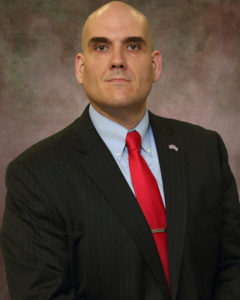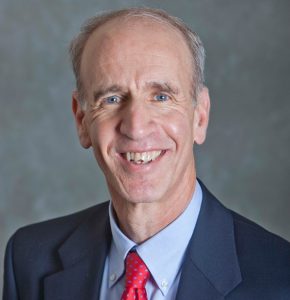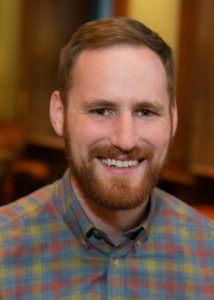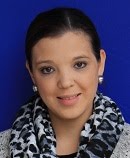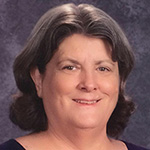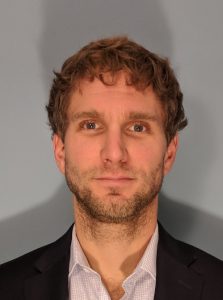I get a lot questions about the on-line program I am in at Georgia Tech. I thought I would share details about my experience to help others in our CSTA membership who might consider online education as a possible option for their own education. I know there are several CS teachers in CSTA in the same or a similar program who can also add to the discussion.
The OMSCS (Online Masters of Science in Computer Science) at Georgia Tech has broken through barriers, stereotypes, and obstacles and created a world class master’s program that not only has kept its academic integrity and rigor, but has done so at a cost that is tremendously lower than many on-campus programs. The program has been recognized world-wide for its innovative approach and financial model. A typical class runs about $800, including tuition and fees. Students have to complete 10 classes for a degree, putting the total cost of attendance at about $8000. Within those 10 classes, students are required to choose a specialization (Computational Perception & Robotics, Computing Systems, Interactive Intelligence, or Machine Learning), which usually means you have to choose some classes(usually 6 out of the 10) from a specific set of required classes. Most students take 2-3 years to complete their degree, but can take up to 5.
Yes, it’s different than being on campus. Yes, there are things we don’t get access to. No, we cannot go to football games. We don’t have student IDs (I don’t think). Classes have the same expectations of rigor online as they would on-campus. There is freedom to choose which classes to take, and in what order. Classes tend to be project-based, very student-driven. Not all classes in the entire CS program are offered online; currently, there are about 30 class offerings. Any class that is offered has to be “converted” to this online format. We use the same system to register and get grades as other students at Georgia Tech. Each class is different, but many of them take advantage of Udacity for regular “lecture.” The designers of the program have coached the class professors how to record interactive and engaging videos for class. These videos are broken up into bite size chunks never more than a few minutes in length…and they are not dry and monotonous. Many include interactive quizzes embedded in each video. We are able to sense the passions, intonation, and enthusiasm of the professors. Having completed a MOOC with some terrible prerecorded lessons, I have thoroughly enjoyed this online experience.
Tests and exams are always administered online with a 4-day window (you can usually take it anytime from Friday- Monday night) and uses software called ProctorTrack which virtually eliminates the possibility of cheating. With all the obvious possible opportunities for dishonesty with a 100% online class, the program takes it extremely seriously; the honesty element is a regular topic of discussion. In fact, what I notice is that the students themselves take pride in the sense of honor that we all embrace as members of the program.
I have had every type of educational experience possible. I have had theoretical classes with lots of textbook reading, quizzes, and tests. I have had classes with no tests at all, but lots of writing assignments. I have had classes with only a midterm and an exam. I have had classes with large group projects. I have had classes with large individual projects. I have had projects that lasted days, weeks, and even months. I have had classes with required graded homework and classes with ungraded homework. I even had one class where we found out the one of the TA was actually a “virtual assistant.” The one thing every class has in common is that they are all very challenging and expect your undivided attention. I spend anywhere from 10-30 hours per week on a typical class.
One of the major drawbacks that I have experienced is simply not having the inter-student conversations, overhearing a fellow student question to the professor, hanging out after class to talk about ideas with fellow students, chatting with the professor before class for a lesson clarification, or impromptu collaborating in the lab while working on projects.
Once students have found their way into the first class, they quickly learn that the online discussion board, PIAZZA, is the lifeblood of the program. The board is heavily monitored by TAs every day all day. Most classes have lots of (T)eaching (A)ssistants to handle the 100-200 students in the class. Students are also heavy contributors, but not only posting questions…..they are actually equally as active responding to others. In fact, some classes require (or encourage) participation in Piazza. In some classes, we’ll even have responses from the professor. Without giving away too much in the response (honor part plays a part here as well), fellow students give hints, explanations, and advice to each other. Students truly feel like they are in this together. Each class also has a SLACK channel for instant communications for those that prefer that style of medium. TAs also monitor these channels, so students will post questions here as well.
Some classes offer office hours (by TA or the professor) several times throughout a week through Piazza, SLACK, or Bluejeans.
Grading is exactly the same as it would be on-camopus. Any grade can be challenged by asking for a regrade, as long as there is a valid explanation for the request. This happens all the time. Because it is online and there are students from all over the world, most classes usually give at least a week notice for most assignments, giving students the ability to manage class with full time jobs (which many students have). That gives us time to research, plan, and struggle with the projects.
Students who complete 10 courses successfully earn a Master’s Degree, which is the exact same degree earned by on-campus students. Students are offered the chance to come to campus to graduate with fellow classmates during the regular graduation.

Doug Bergman – 9 to 12 teacher representative
Doug Bergman
9-12 Representative

